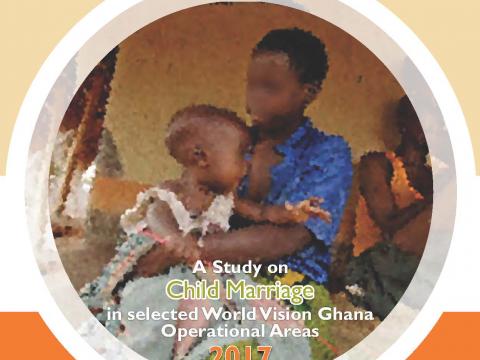A Study on Child Marriage in selected World Vision Ghana Operational Areas 2017
Download
The marriage of girls and sometimes boys before the legal age of marriage is a global phenomenon but fairly widespread in Sub-Saharan Africa. Despite having established a legal framework, the practice of child marriage persists in Ghana and is present in all the ten administrative regions of the country. Child marriage is known to adversely impact the well-being of the girl child and can have inter-generational dimensions. It is therefore necessary to understand why the practice continues and determine what measures can be introduced to make the laws more effective and to change behaviour.
The four main objectives that this research by World Vision Ghana sought to address were:
· To examine the impact of child marriage on the girls and women with special focus on issues of domestic violence and maternal health and morbidity.
· To examine the sexual and reproductive rights of child brides and their access to sexual and reproductive health services.
· To identify and assess community-led actions and efforts to reduce child marriage.
· To evaluate the legal framework on child marriage (international, regional and national), services and capacity of formal and informal institutions including faith based organizations to prevent and respond to child marriage
Data collection took place in eight communities within World Vision Ghana operational areas. Both quantitative and qualitative data was collected and analysed. The quantitative study involved the analysis of existing data sets from the sixth round of the Ghana Living Standards Survey (GLSS), the 2008 and 2014 Ghana Demographic and Health Surveys (GDHS) and the Ghana Socio-economic Panel Survey which provided a macro-perspective on the prevalence and trends in the incidence of child marriage over time. Qualitative data provided the opportunity to better explore causal relationships. The qualitative data collection took place in the Greater Accra Region (institutional surveys) the Brong Ahafo, Volta, Northern and Upper East Regions. These regions were chosen based on the incidence of child marriage, inheritance practices, ethnic diversity and socioeconomic status as measured by the poverty incidence.
Child marriage was more prevalent in the rural areas than urban areas. Northern Region has the highest incidence at 38.0% with Greater Accra Region recording the lowest incidence at 17.8%. The three Northern Regions recorded the highest incidence and the highest child marriage gap indices which are above the national average.
There is the need for a multifaceted approach, which simultaneously addresses the causal factors with programmes deliberately designed to target the young brides. Policy should not only focus on the eradication of child marriage. Interventions should also be designed to assist girls who are married.